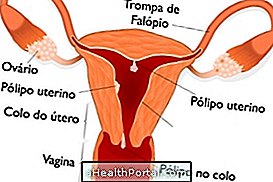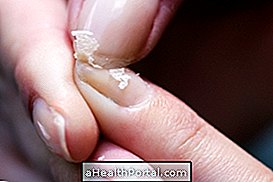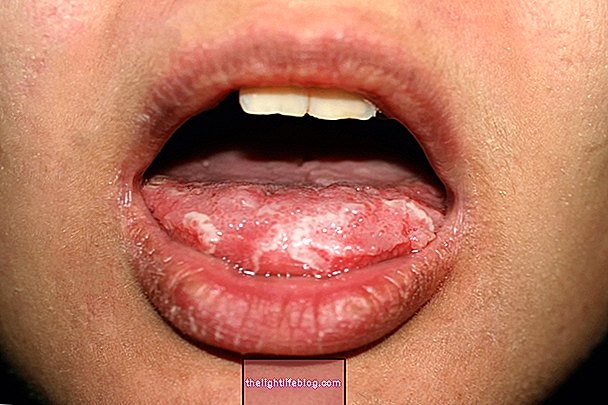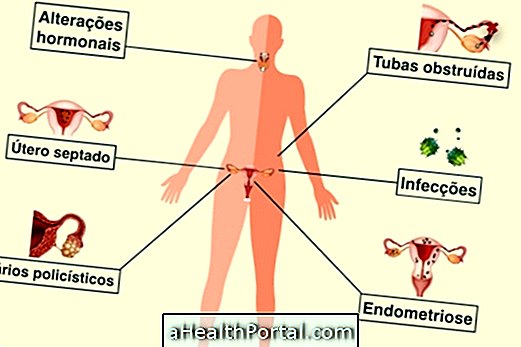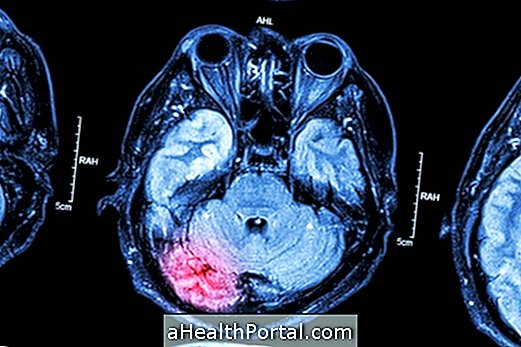Hydrosalpinx is a gynecological alteration in which the fallopian tubes, popularly known as fallopian tubes, are blocked due to the presence of fluids, which can happen due to infection, endometriosis or gynecological surgeries, for example.
Most cases of hydrosalpinx do not lead to the appearance of signs or symptoms, they are only identified during routine gynecological examinations or when the woman has difficulty conceiving, and more specific tests are indicated. Thus, if the diagnosis is confirmed, the gynecologist can indicate the most appropriate treatment, which usually involves the use of antibiotics and surgery to clear the tubes.

Hydrosalpinx symptoms
Most cases of hydrosalpinx are asymptomatic, however some women may have some signs and symptoms that may vary according to their general health and cause of hydrosalpinx, the main ones being:
- Bleeding outside the menstrual period;
- Pain during sexual intercourse;
- Abdominal pain;
- Change in color and consistency of vaginal discharge, being more liquid;
- Fever, in some cases;
- Difficulty getting pregnant.
Although there are symptoms that can be associated with hydrosalpinx, most cases are asymptomatic and, therefore, the diagnosis is only made during routine gynecological exams such as transvaginal ultrasound, laparoscopy and hysterosalpingography, which is the more specific exam for the diagnosis of this alteration, since it allows to identify alterations related to the fallopian tubes. See how hysterosalpingography is done and how it is prepared.
Is it possible to get pregnant with hydrosalpinx?
It is common for women with hydrosalpinx to be infertile, because because of the accumulation of fluid in the tubes, it is not possible to capture the oocyte released by the ovary and that must be fertilized by the sperm, besides that even if there is fertilization, this situation does not favor implantation. of the embryo in the womb, which makes pregnancy more difficult.
However, one of the options that allow pregnancy in women with hydrosalpinx is in vitro fertilization, in which the egg is fertilized by the sperm in the laboratory and then the embryo is implanted in the uterus. Despite this, it is important to discuss with the gynecologist the chances of successful fertilization and the need for other treatments to get pregnant. Understand how in vitro fertilization is done.

Main causes
Hydrosalpinx is often associated with sexually transmitted infections (STIs), mainly chlamydia, syphilis and gonorrhea, in which the infectious agents responsible for these diseases can reach the tubes and cause inflammation, promoting the destruction of the inner layer of the tubes and leading to an increase in the secretion and accumulation of fluids at the site.
Hydrosalpinx can also often be related to Pelvic Inflammatory Disease (PID), which is a situation that occurs due to the lack of treatment or incorrect treatment of gynecological infections, which may have been caused either by sexually transmitted microorganisms or be due to imbalance normal flora, in which case it is often related to the bacterium Gardnerella sp. Learn more about DIP and how to identify it.
In addition, other situations that may be related to hydrosalpinx are endometriosis, presence of adhesions in the pelvic region, gynecological surgeries or tumors in the uterine tubes or in nearby organs.
How treatment should be
Treatment for hydrosalpinx should be indicated by the gynecologist according to the cause of the change and symptoms that the woman may be experiencing. In most cases, the doctor recommends the use of antibiotics according to the infectious agent responsible for hydrosalpinx, in addition to the possibility of medications to relieve symptoms or regulate the menstrual cycle, for example.
In addition, it is also common for the doctor to indicate surgery to unblock the fallopian tubes and eliminate excess fluid. In the most severe cases, removal of the fallopian tubes and structures that may have been compromised may be indicated.
Was this information helpful?
Yes No
Your opinion is important! Write here how we can improve our text:
Any questions? Click here to be answered.
Email in which you want to receive a reply:
Check the confirmation email we sent you.
Your name:
Reason for visit:
--- Choose your reason --- DiseaseLive betterHelp another personGain knowledge
Are you a health professional?
NoMedicalPharmaceuticalsNurseNutritionistBiomedicalPhysiotherapistBeauticianOther
Bibliography
- BORDONI, Lucas S. Evaluation of the relationship between the presence of hydrosalpinx and the result of in vitro fertilization. Course Conclusion Paper, 2016. Federal University of Bahia.





